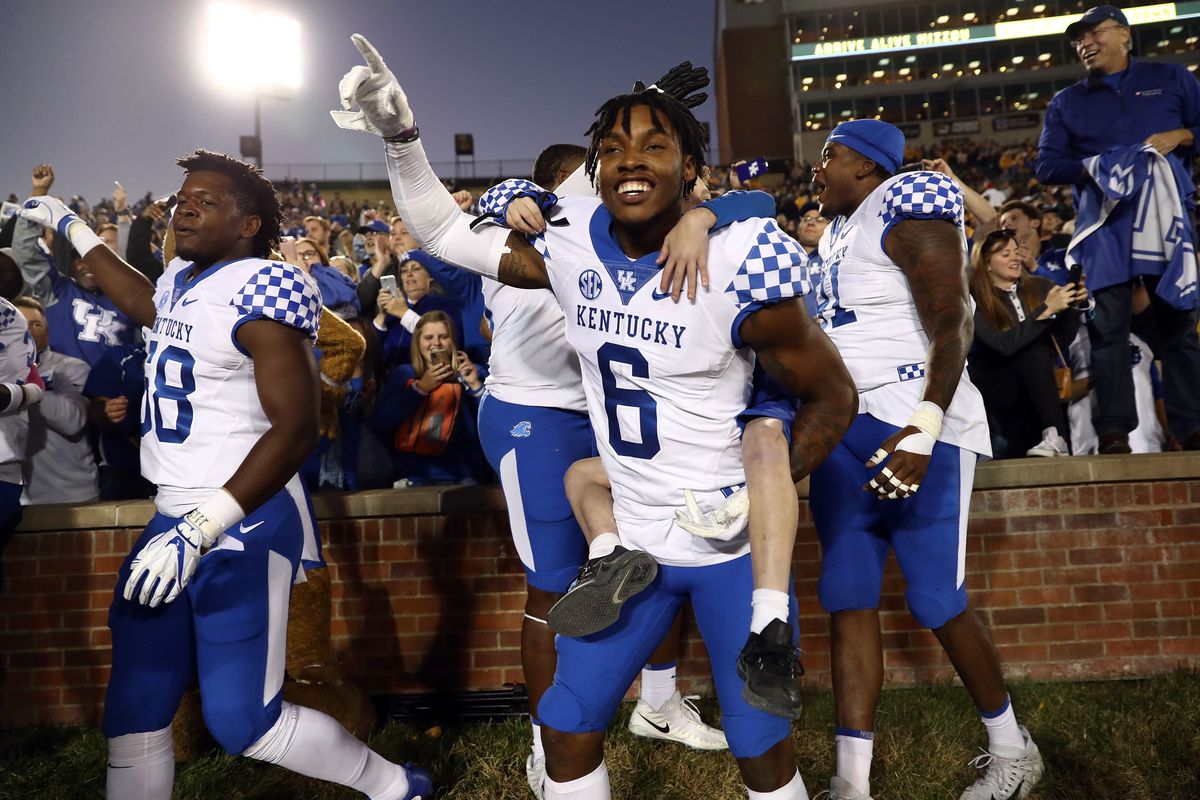A look at the selections
Lance Zierlein's analysis of the Texans later picks
Apr 26, 2019, 9:16 pm
A look at the selections

Lance Zierlein's breakdown of the Texans second-day draft picks:
Round: 2 Pick: 54
Strengths
Weaknesses
Who he is:
Long and tall with physical traits galore, Johnson looks the part but lacks the consistency and ball skills expected of a starting NFL cornerback at times on tape. He has had issues with allowing catches and touchdowns when his back is to the ball and his ball production was very disappointing over the last two years. Some position coaches believe that his issues can be corrected with coaching. If it's not corrected, it will require changes in coverage scheme.
On the other end of the spectrum, he's extremely long and strong from press. At the Senior Bowl he suffocated receivers from press coverage rep after rep and pushed himself way up with evaluators. He is willing as tackler in run support. Johnson's combination of size, strength and speed could create an opportunity to step right into a starter's role opposite Johnathan Joseph, but the going will likely be bumpy when the ball is in the air for at least the first season as he adjusts and learns.
Round: 2 Pick: 55
Strengths
Weaknesses
Who he is
He played left tackle this season but will bump over to right tackle where he is more comfortable. Scharping has a good combination of size and functional athletic ability, but there is work to be done in his pass protection. While he's shown the ability to handle bull rushers with a stiff inside hand and quality recovery talent around the edge, He tends to open his outside shoulder too early and his pass sets become hurried and unfocused against edge speed.
However, keep this in mind…. in his matchup against Florida State's Brian Burns, Scharping was outstanding at keeping Burns away from his quarterback and stymieing Burns' edge speed while preventing any inside counters. Scharping has potential in the running game but need more reps with his hand in the ground and firing out into opponents. He could compete for early reps, but I'm expecting him to learn in practice for the better part of the year. Then again, when is the last time Seantrell Henderson stayed healthy?
Round: 3. Pick: 86
Strengths
Round 5: Pick: 161.
Strengths
Round: 6. Pick: 195.
Strengths
Round: 7. Pick: 220.
Strengths
Editor's note: Lance's analysis of all the Texans picks first appeared on NFL.com, where you can find all of his terrific draft coverage.
Oswald Peraza hit a two-run single in the ninth inning to help the Los Angeles Angels snap a three-game losing skid by beating the Houston Astros 4-1 on Saturday night.
Peraza entered the game as a defensive replacement in the seventh inning and hit a bases-loaded fly ball to deep right field that eluded the outstretched glove of Cam Smith. It was the fourth straight hit off Astros closer Bryan Abreu (3-4), who had not allowed a run in his previous 12 appearances.
The Angels third run of the ninth inning scored when Mike Trout walked with the bases loaded.
Kyle Hendricks allowed one run while scattering seven hits over six innings. He held the Astros to 1 for 8 with runners in scoring position, the one hit coming on Jesús Sánchez’s third-inning infield single that scored Jeremy Peña.
Reid Detmers worked around a leadoff walk to keep the Astros scoreless in the seventh, and José Fermin (3-2) retired the side in order in the eighth before Kenley Jansen worked a scoreless ninth to earn his 24th save.
Houston’s Spencer Arrighetti struck out a season-high eight batters over 6 1/3 innings. The only hit he allowed was Zach Neto’s third-inning solo home run.
Yordan Alvarez had two hits for the Astros, who remained three games ahead of Seattle for first place in the AL West.
Peraza’s two-run single to deep right field that broke a 1-1 tie in the ninth.
Opponents were 5 for 44 against Abreu in August before he allowed four straight hits in the ninth.
Astros RHP Hunter Brown (10-6, 2.37 ERA) faces RHP José Soriano (9-9, 3.85) when the series continues Sunday.
